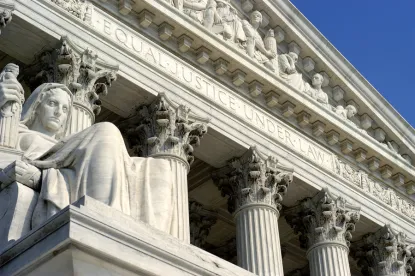In March of this year, we provided an update regarding how lower courts were applying the Supreme Court’s landmark decision in Kisor v. Wilkie, 139 S. Ct. 2400 (2019), which addressed the question of whether the Court should overrule the Auer doctrine, named after the 1997 Supreme Court case Auer v. Robbins. The Auer doctrine rests on the premise that agencies are in a better position than courts to interpret their own regulations. Under the doctrine, courts generally defer to an agency’s reasonable readings of its own “genuinely ambiguous” regulations. In a 5-4 decision, the Court declined to abandon the Auer doctrine on grounds of stare decisis but seemed to outline restrictions on the scope and applicability of the doctrine, including the rule that deference to an agency’s interpretation of an ambiguous regulation is not appropriate if the interpretation does not reflect the “fair and considered judgment” of the agency. This means that deference may not be appropriate if the interpretation creates “unfair surprise,” such as when the agency’s interpretation conflicts with a prior interpretation or upends a party’s reliance on established practices. Kisor, 139 S. Ct. at 2417-18.
Since our March 2020 update, numerous lower courts have continued to interpret and apply Kisor to agency interpretations of regulations. Some lower courts continue to disagree on whether Kisor actually changed Auer. For example, while the Eighth Circuit has interpreted Kisor to place restrictions on Auer, the First and Fifth Circuits have interpreted Kisor as merely restating or clarifying Auer. Coates v. Dassault Falcon Jet Corp., 961 F.3d 1039, 1044 (8th Cir. 2020) (Kisor “substantially restricted, if not all but overruled” Auer); United States v. Lewis, 963 F.3d 16, 24 (“sought to clarify”); United States v. Cruz-Florez, 799 Fed. Appx. 245, 246 (5th Cir. 2020) (“merely restated”). For its part, the Sixth Circuit has said Kisor’s impact on Auer is “murky,” at least at this point. United States v. Owen, 940 F.3d 308, 314 (6th Cir. 2019). And district courts remain split on the question, with a majority finding that Kisor did, in fact, narrow Auer. Compare, e.g., Devon Energy Prod. Co., L.P. v. Gould, 421 F. Supp. 3d 1213, 1232 (D. Wyo. 2019) (“restrict[ed] the Auer doctrine”), Johnson v. Starbucks Corp., 2020 U.S. Dist. LEXIS 74695 (Apr. 27, 2020) (“Kisor limited the deference”), and Sicklesmith v. Hershey Entm’t & Resorts Co., 440 F. Supp. 3d 391, 399 (M.D. Pa. 2020) (“new, more stringent standard), Esry v. OTB Acquisition LLC, 2020 U.S. Dist. LEXIS 107038 (“Kisor … narrowed Auer deference, making it harder for the agency to earn it”); with Spears v. Liberty Life Assur. Co. of Boston, 2019 U.S. Dist. LEXIS 169156 (D. Conn. Sept. 30, 2019) (“merely explained”) and United States SEC v. Alpine Sec. Corp., 2019 U.S. Dist. LEXIS 147493 (Aug. 29, 2019) (Kisor “does not reflect a change”).
Regardless of whether Kisor changed Auer, the decisions since March applying Kisor make it clear that lower courts continue to be disinclined to find “genuine ambiguity” in regulations. See, e.g., T.N. v. DOE, 2020 U.S. Dist. LEXIS 80147 (S.D.W.Va. May 7, 2020) (citing Kisor, and noting that “courts must resist the impulse of rushing to judgment on whether an ambiguity exists”). In addition, when such a “genuine ambiguity” exists in a regulation, “unfair surprise” continues to be the most common factor weighing against deference to an agency’s interpretation. See, e.g., Oak v. Price, 2020 U.S. Dist. LEXIS 69207 (E.D. Mich. Apr. 20, 2020) (no deference to agency interpretation that was inconsistent with prior practice).
In one case decided in May 2020, the Sixth Circuit reviewed a steel company’s challenge to the Occupational Safety and Health Review Commission’s conclusion that the company violated a regulation requiring certain workers to use equipment protecting them from falls. Lake Bldg. Prods. v. Sec’y of Labor, 958 F.3d 501 (6th Cir. 2020). In particular, while OSHA’s regulations generally require steel workers to use fall protection when working above a height of 15 feet, they contain an exemption for any worker who is a “connector,” which is as “an employee who, working with hoisting equipment, is placing and connecting structural members and/or components.” 29 C.F.R. § 1926.751.
In June 2016, an OSHA officer cited the company for violating the agency’s fall protection regulations when he saw two employees working 28 feet above the ground without safety harnesses. The on-site foreman disagreed, asserting that the workers were “connectors” and therefore exempt from the fall-protection requirements. The officer cited the company anyway, and the ALJ upheld the citation on grounds that the workers were only “placing” decking bundles rather than “placing and connecting” them and thus were not “connectors” under the regulation.
While the Sixth Circuit found that the regulation unambiguously requires that an employee be both “placing and connecting” to be a “connector,” it vacated OSHA’s citation because the company lacked “fair notice” of the agency’s interpretation of “connector.” Lake Bldg., 958 F.3d at 505. In particular, the Court cited language in the preamble and two administrative decisions suggesting that an employee is a connector when that employee is either “placing” or “connecting” structural members. Moreover, the company presented evidence that “industry practice is to regard ironworkers who are only ‘placing’ structural members or components of a building as ‘connectors.’” Id. According to the Sixth Circuit, this “created uncertainty what [the regulation] meant; and [the company], unlike this court, was not required to ‘exhaust all the traditional tools of construction’ to resolve that uncertainty.” Id. (quoting Kisor, 139 S. Ct. at 2415) (emphasis added).
In the wake of the Kisor decision, the Sixth Circuit’s decision is notable. The court vacated the agency’s penalty despite finding the regulation unambiguously requires an employee be “placing and connecting” to be a “connector.” This suggests that a party could lack “fair notice” of an unambiguous regulation, particularly when the party can point to inconsistent agency statements or decisions on the issue. As the Sixth Circuit explained, the company was not required to “‘exhaust all the traditional tools of construction’” to determine the meaning of the regulation. In this regard, the Sixth Circuit’s decision confirms the importance of avoiding “unfair surprise” under Kisor, even when the regulation at issue may be unambiguous to a court, after it exhausts all the traditional tools of construction.




 />i
/>i

